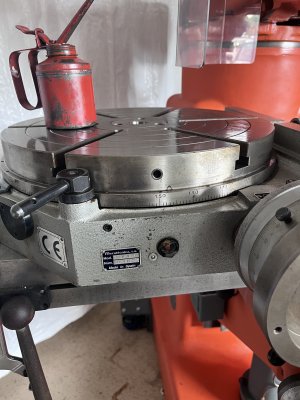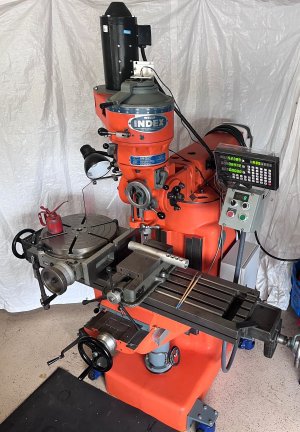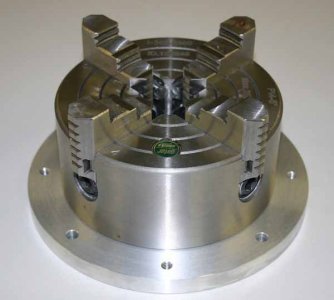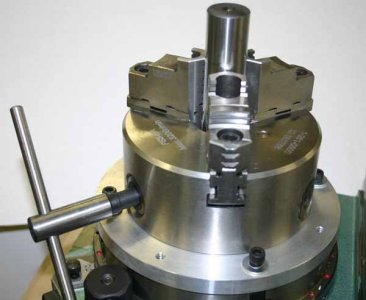What? You've never used a RT vertically?
LOL! I did a so-called "Advanced Machining" (pretty much 1950's machine shop class) course, we used the Rotary Table every day, vertically, without ever having a chuck on the rotary table.
We did all our fixturing using step clamps (basic milling machine clamping sets), and sometimes we stuck a sacrificial plate under the actual work (usually 6061-T4 or T6, or a high temper 7075 alloy, to avoid digging in to the rotary table deck. First job, no matter what the time between last seeing the machine, was to establish the X-Y zero, by dialing in on the R/T center hole. When you came to the machine in the morning, after coffee break, after lunch, etc. Rinse, repeat. But you never had ANY doubt, about whether you were dialed in! Good habits! ALL measurements were from the Zero-Zero point that was the center of the Rotary Table! Even if the drawing used a different zero-zero point, you converted to the centered one. And got on with it.
We used parallel bars, as well as the same clamps, to create reference points, by clamping a parallel bar in contact with the work, and added gage blocks to the mix, to measure needed offsets. Using these, we could create internal or external cam shapes, limited to only our imagination, or the drawing we were given, that provided the diameters, radii, and depths that we were expected to produce. Cams also required that you calculated out how many degrees, minutes and seconds of rotation were required. Lots of Trig... We had dreams in triangles... <cough> Nightmares, sometimes...
It wasn't all bad though. At one point our Chief Instructor, came into our classroom to comment on that the junior tradesmen we were bunking with, in the same barracks, saw how we were working, and it scared the crap out of them, because they though the were done having to work, once they got trade qualified! THAT stuff was just funny! What scared them, was that we were doing two to three hours of Trig and math homework each night...






